site search
online catalog
SCARCE IDENTIFIED OFFICER’S M1860 COLT ARMY WITH HOLSTER AND PERIOD TAG; FIVE TERMS OF SERVICE; WIA FIRST BULL RUN; “HIS ONE IDEA OF LIFE SEEMED TO BE TO DO HIS DUTY.”
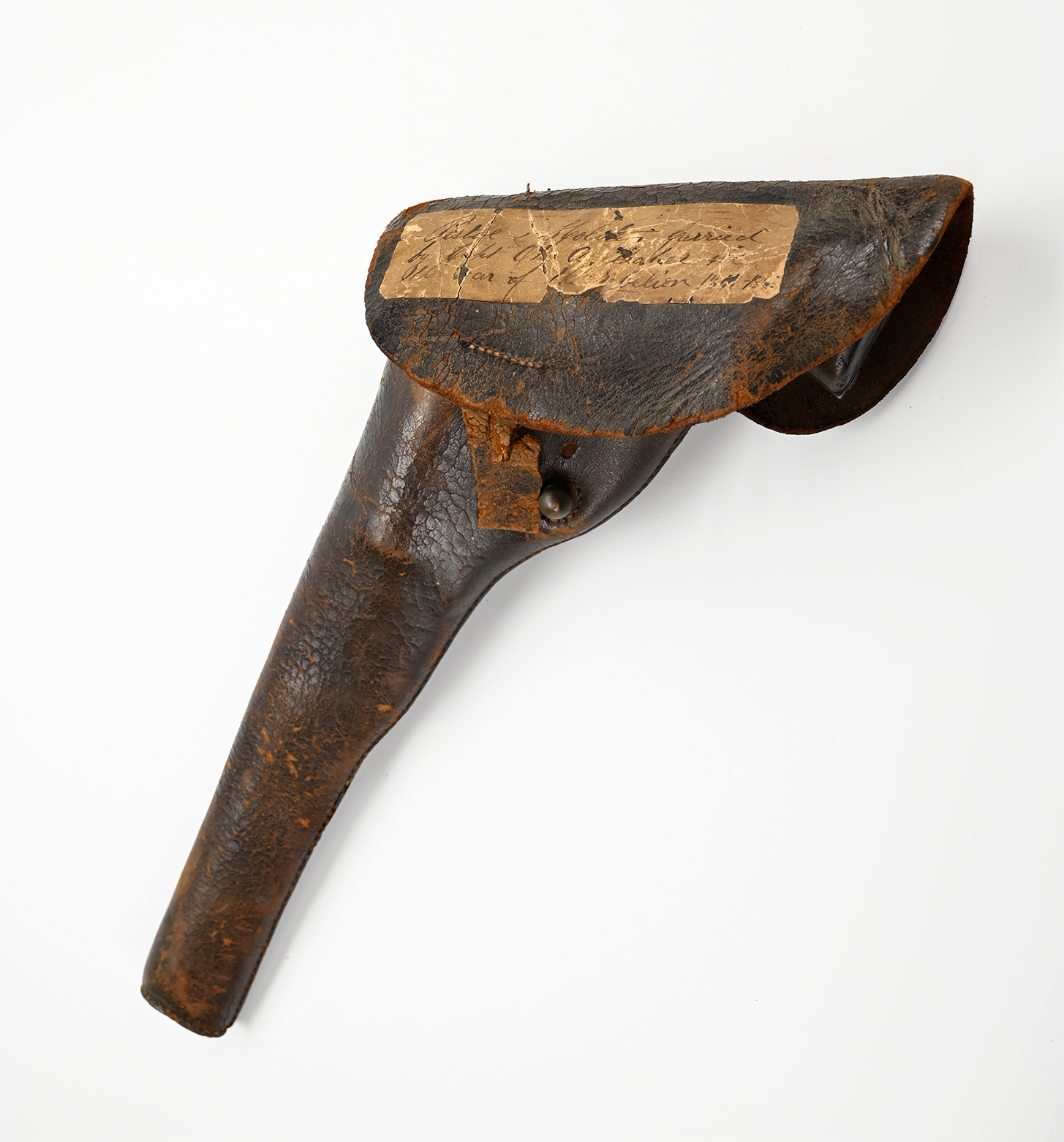
Hover to zoom

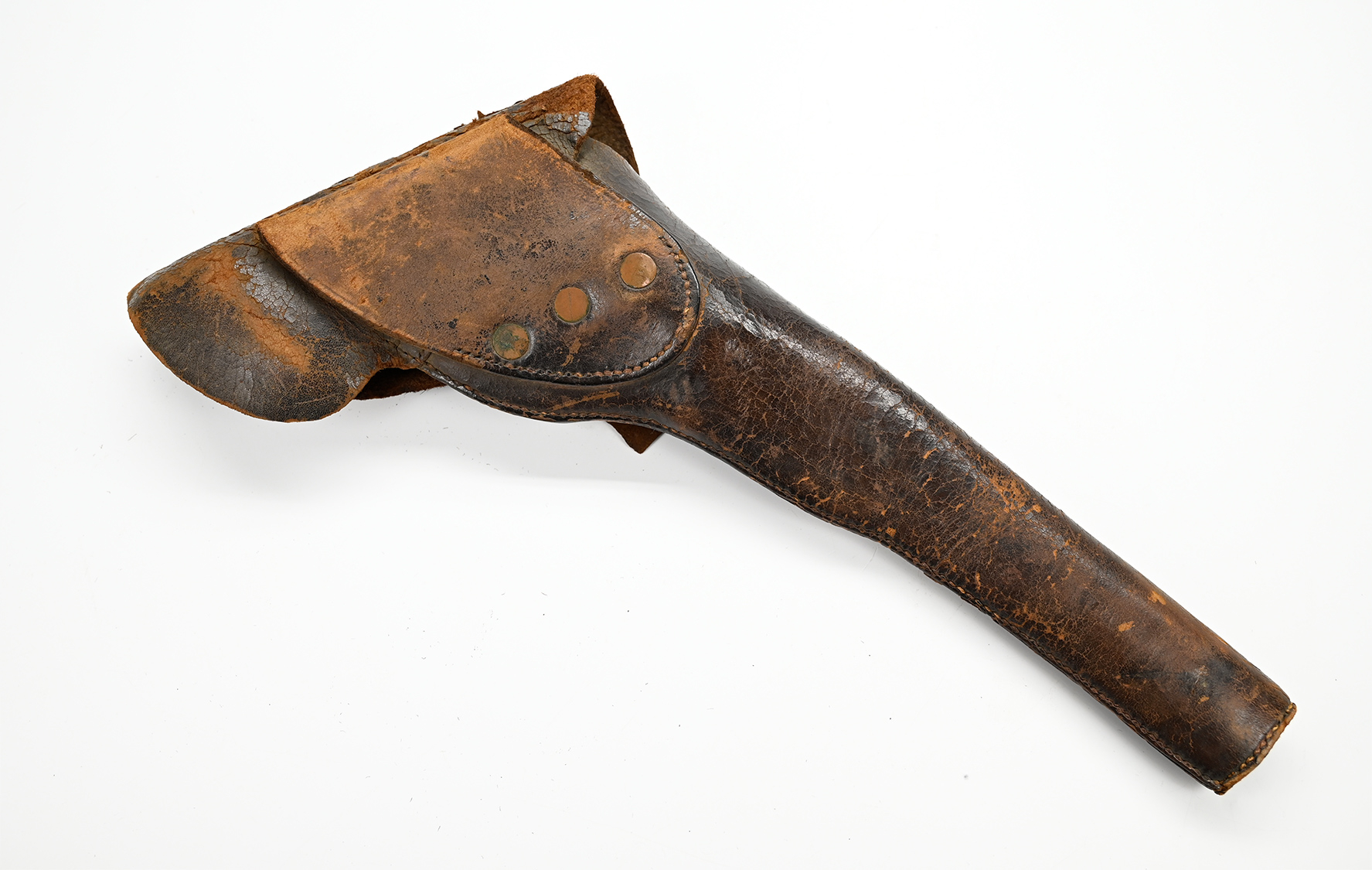
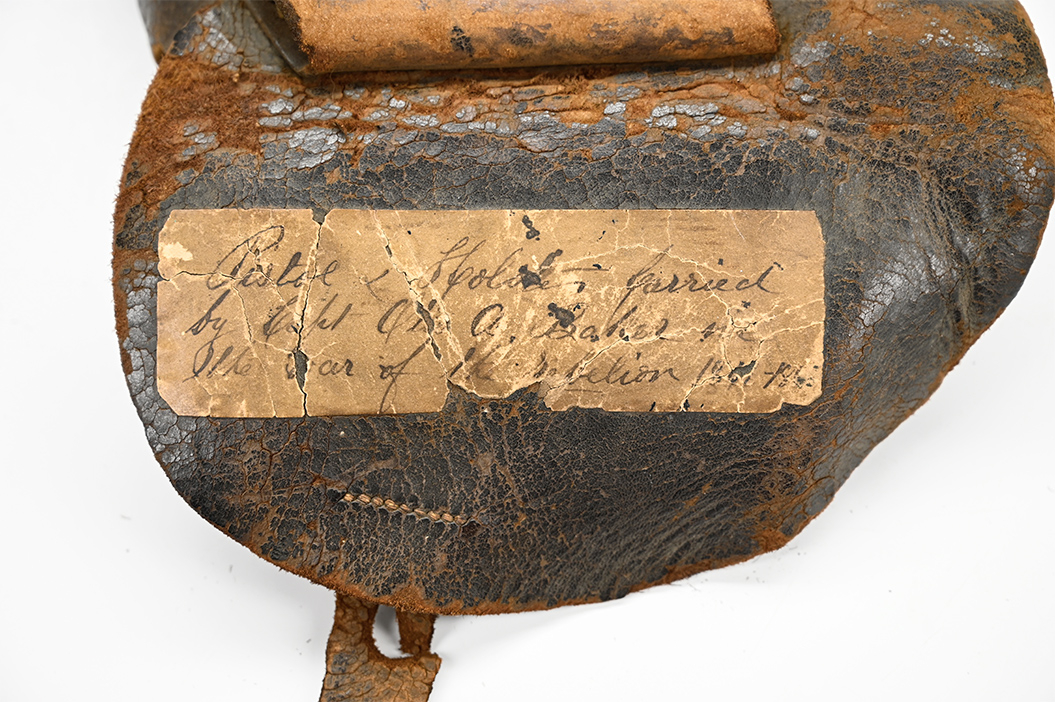
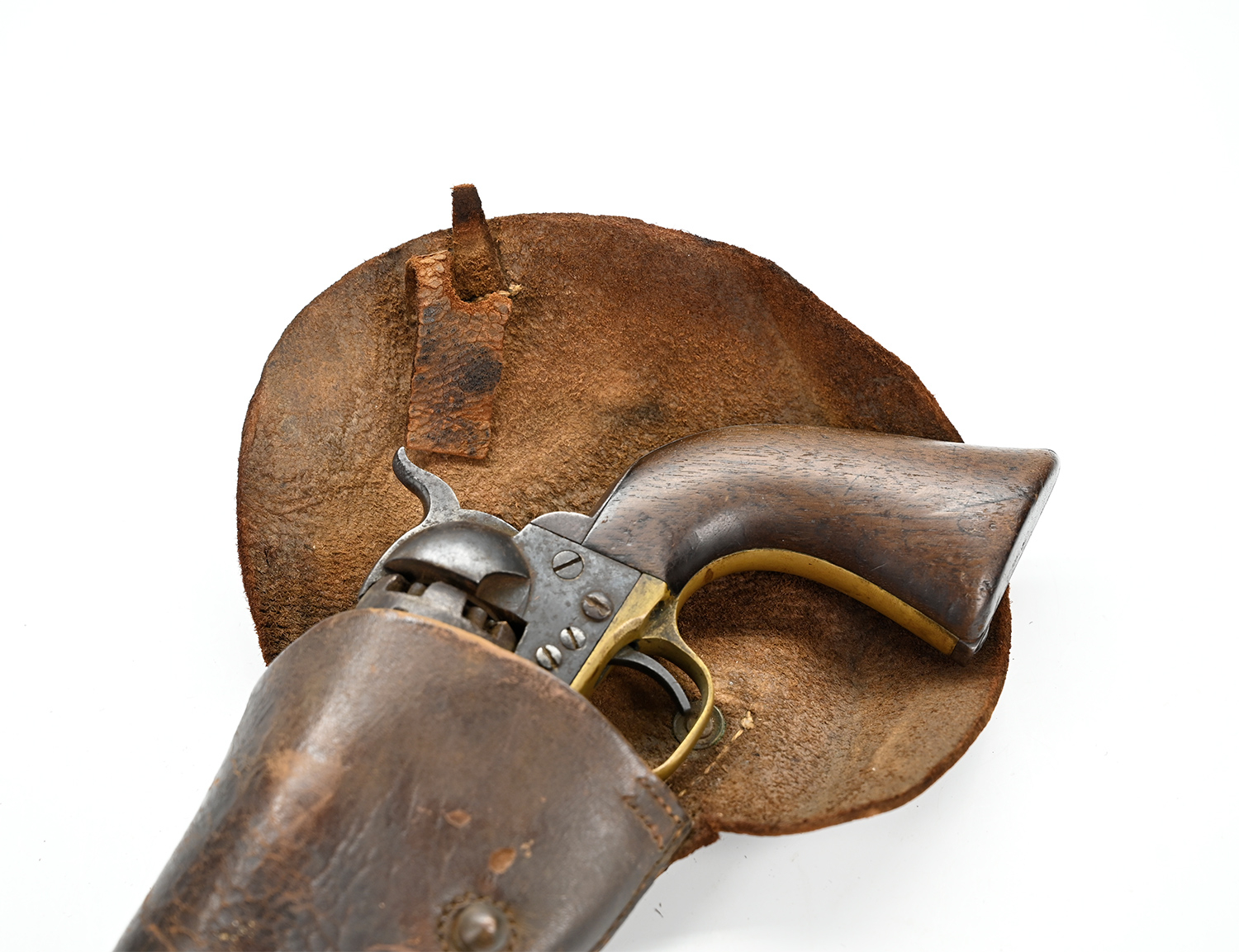
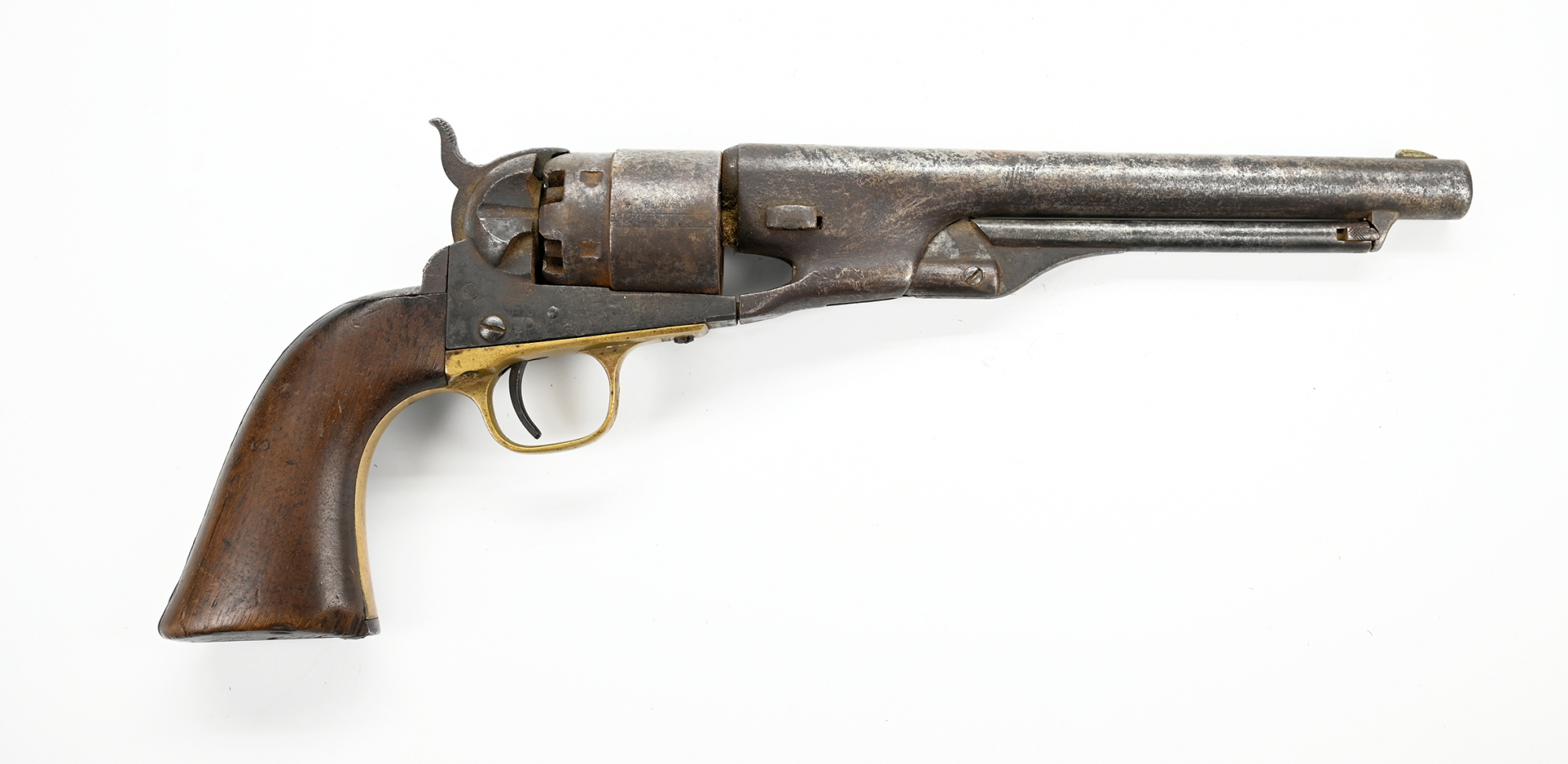
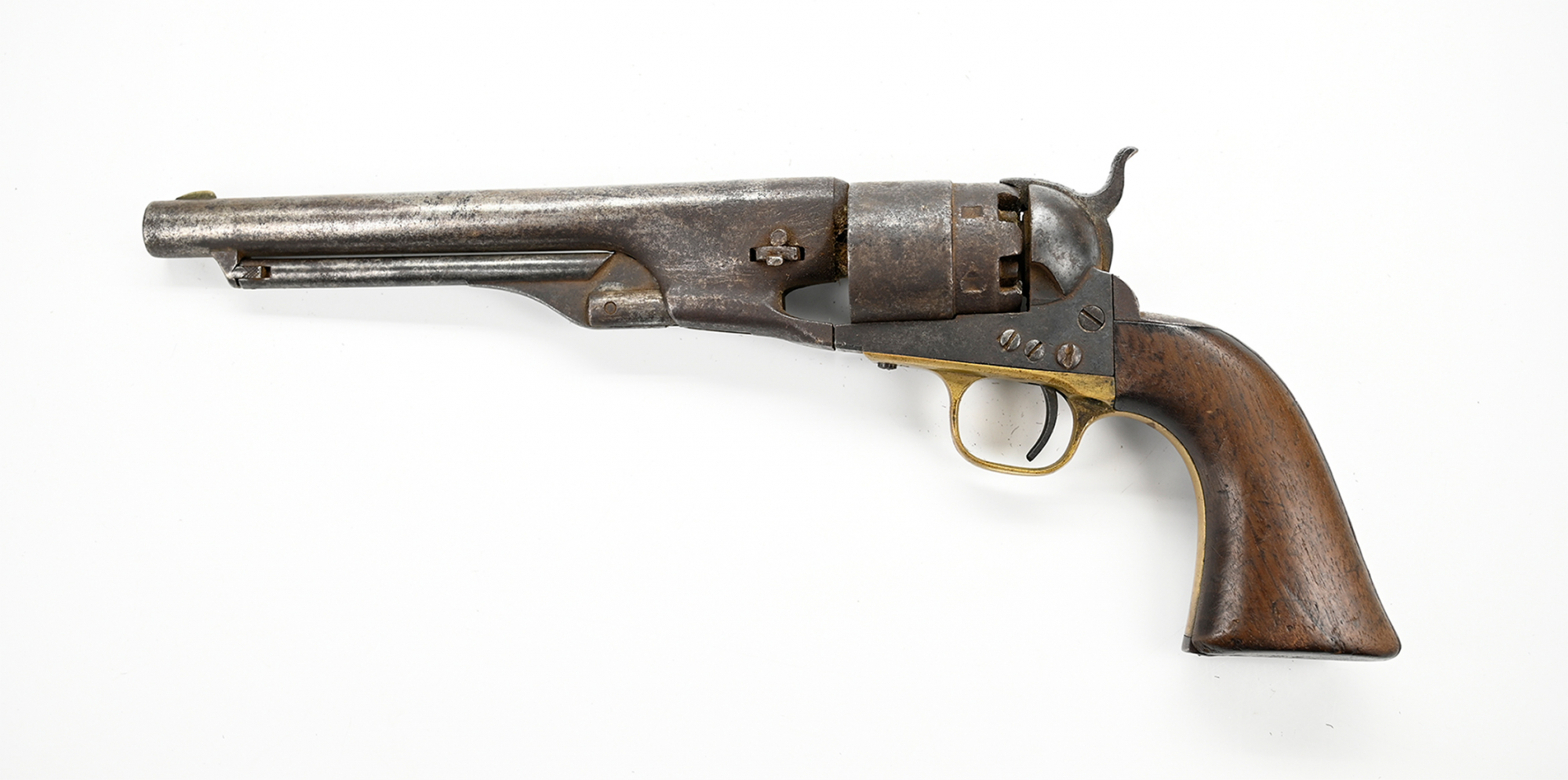
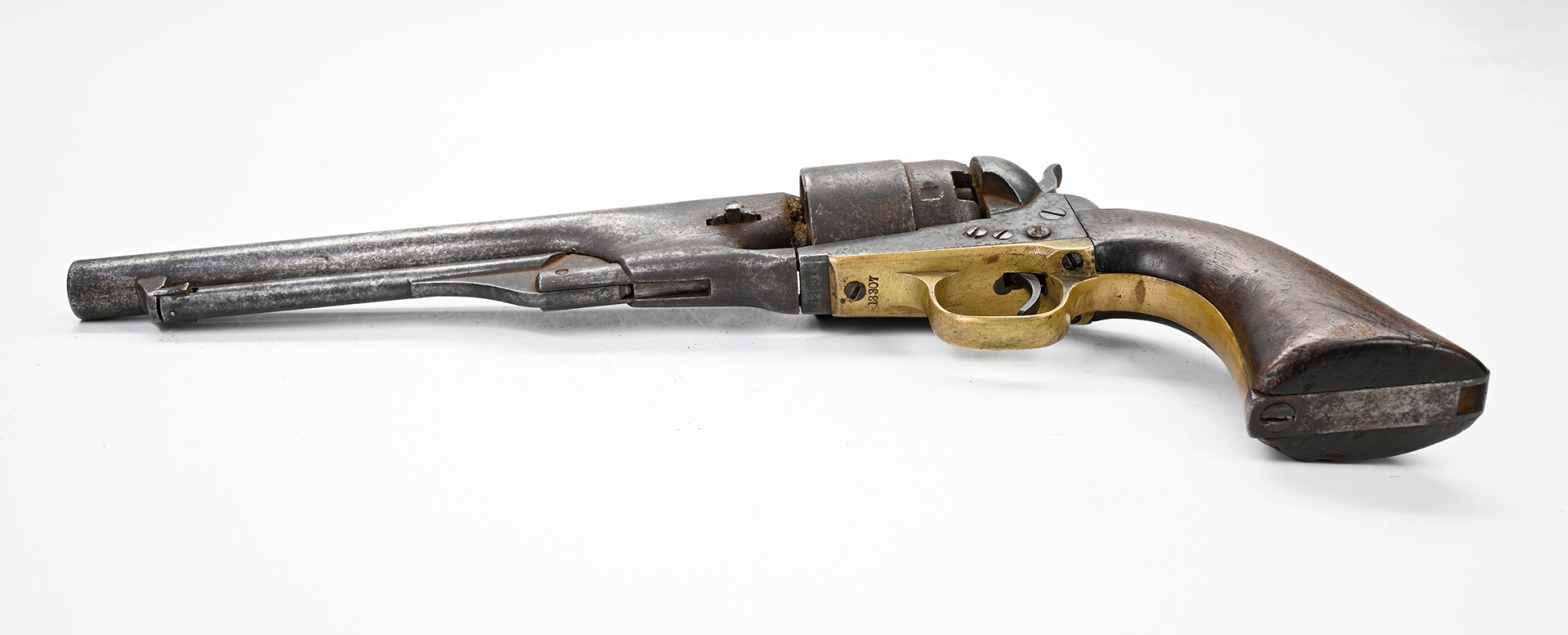
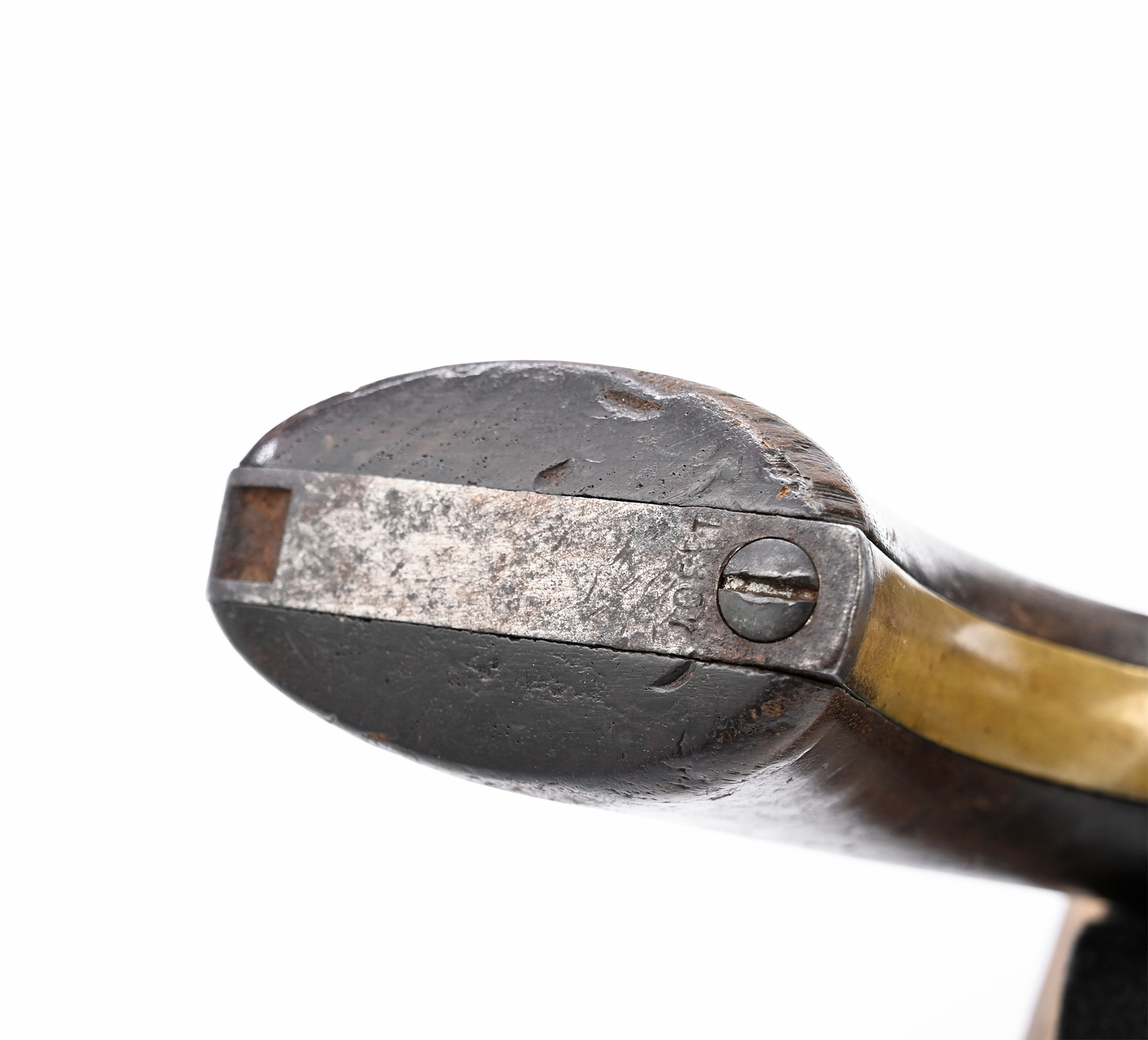
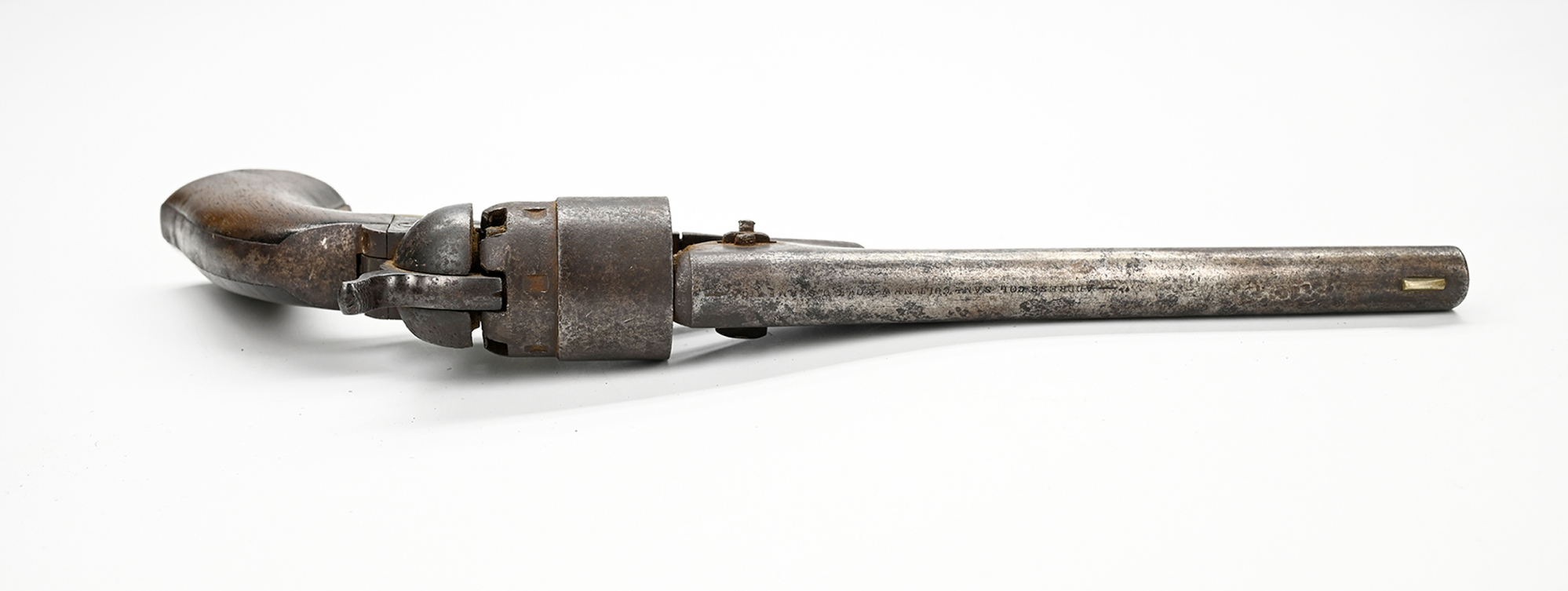
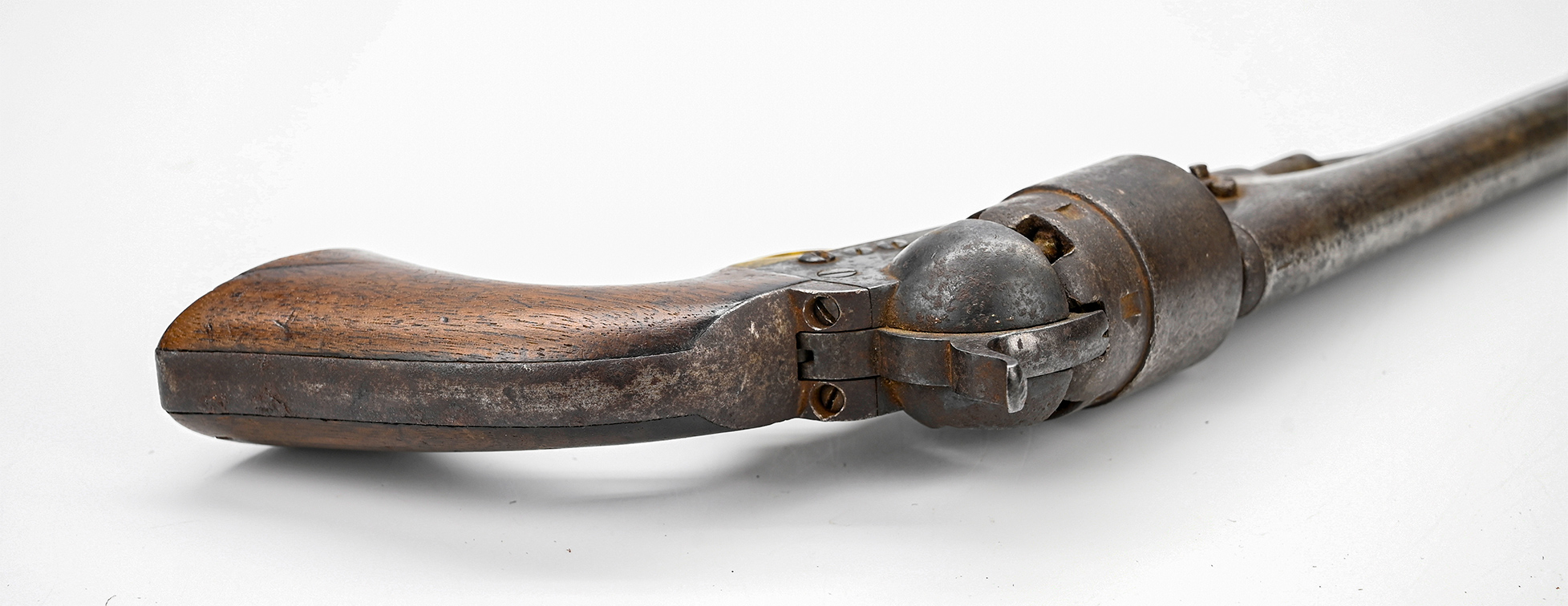
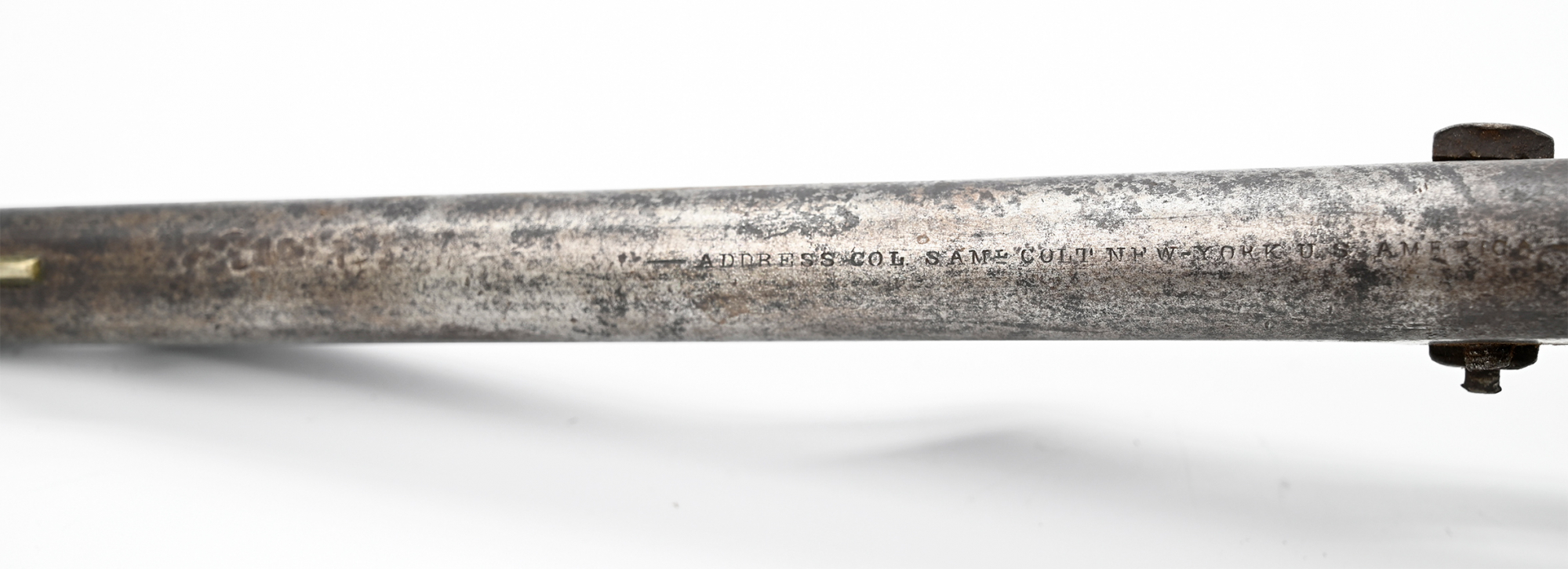
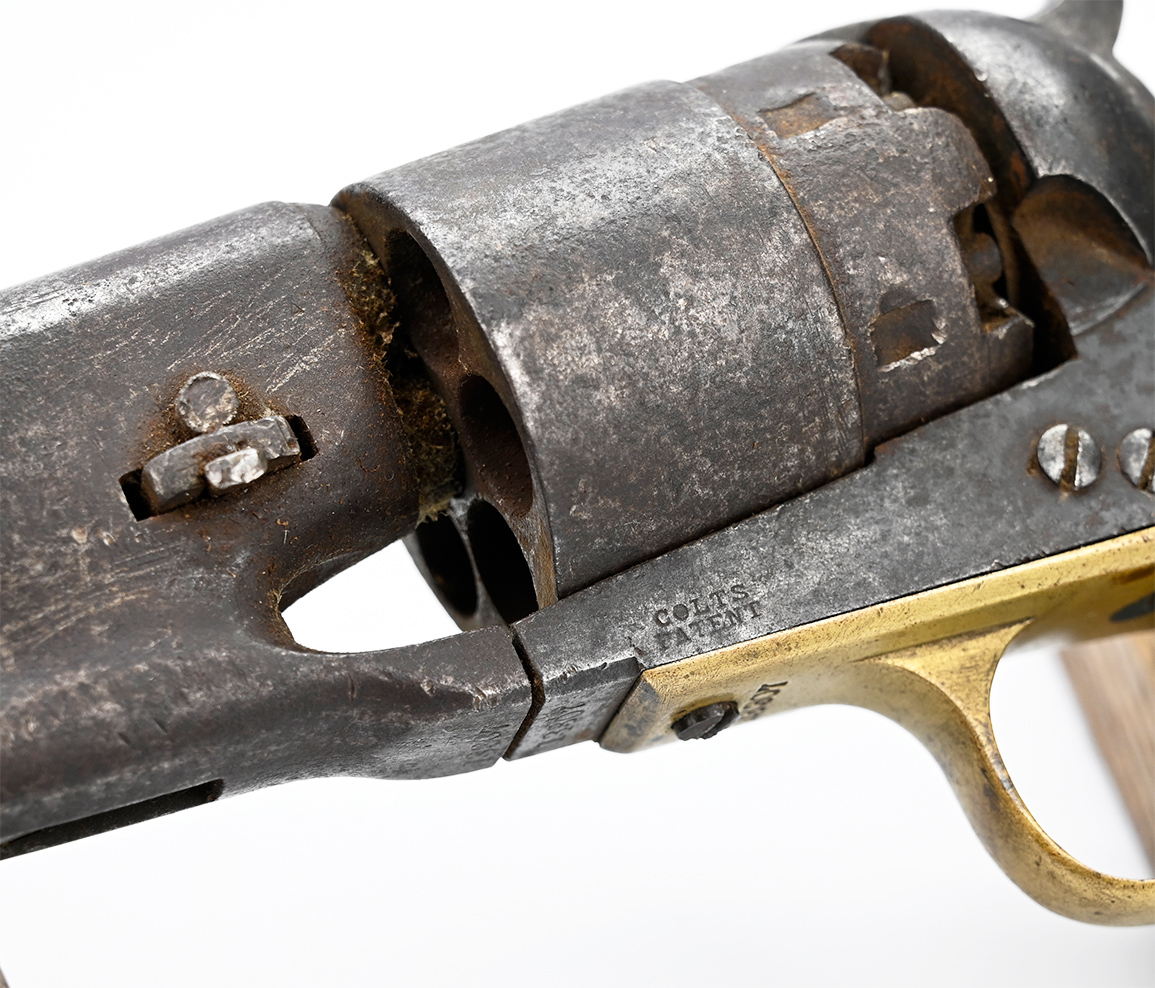
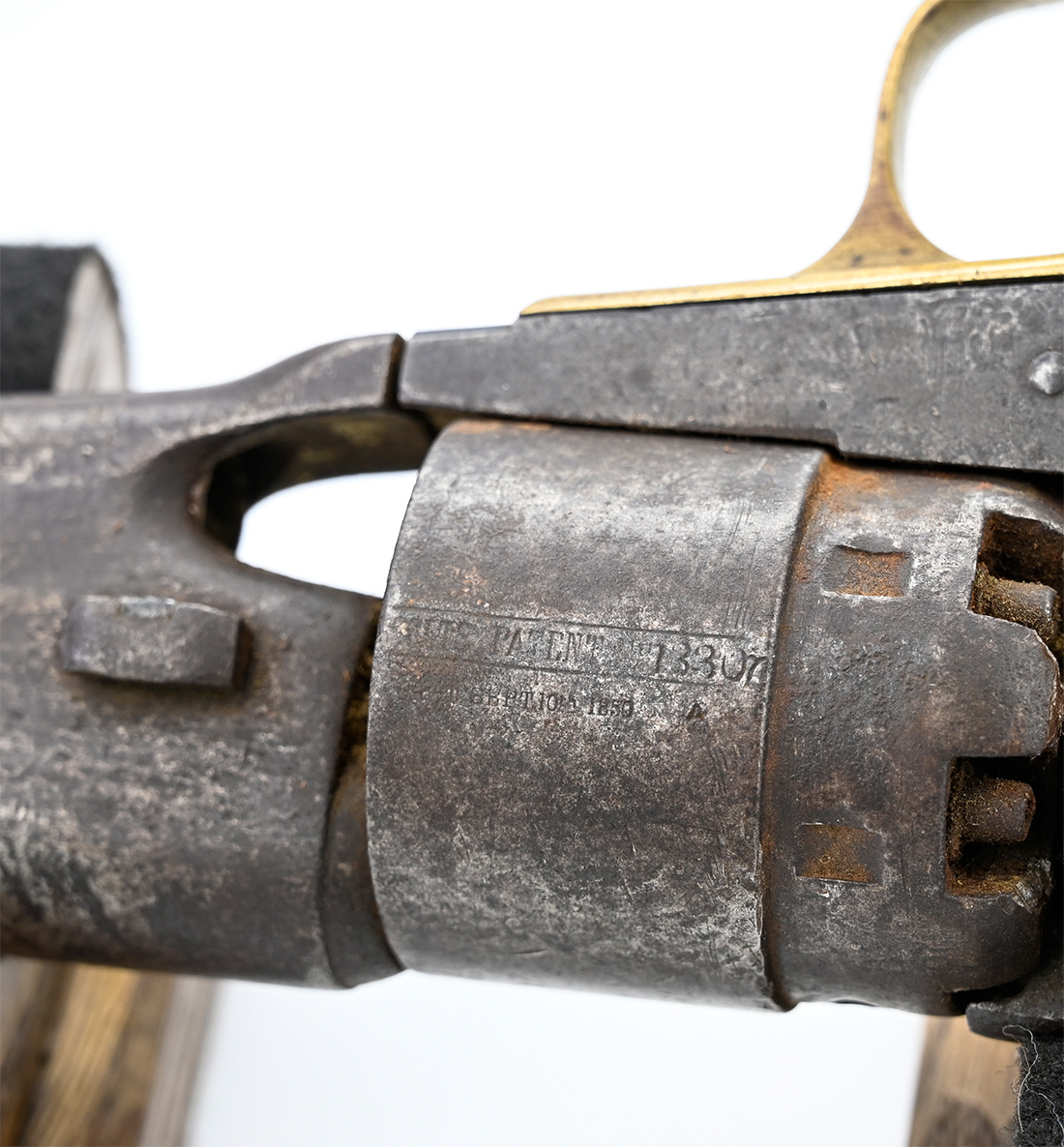
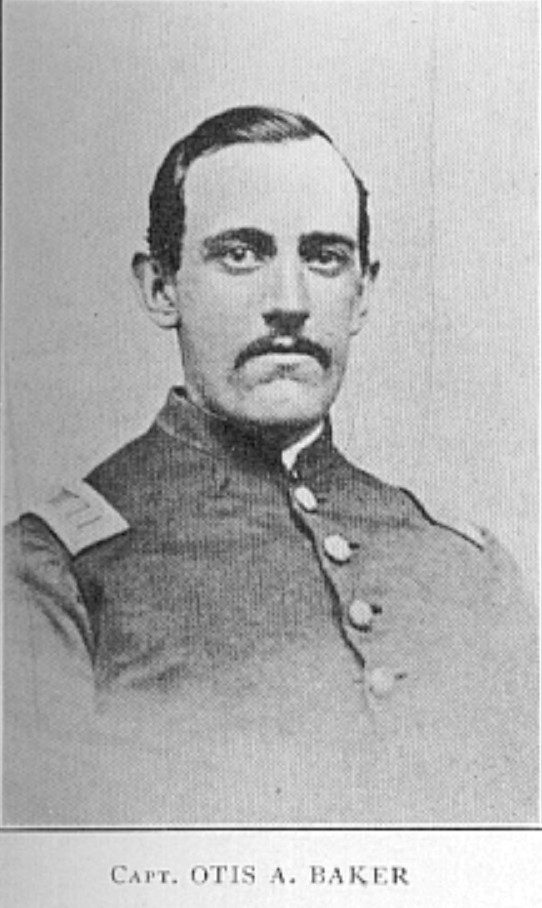
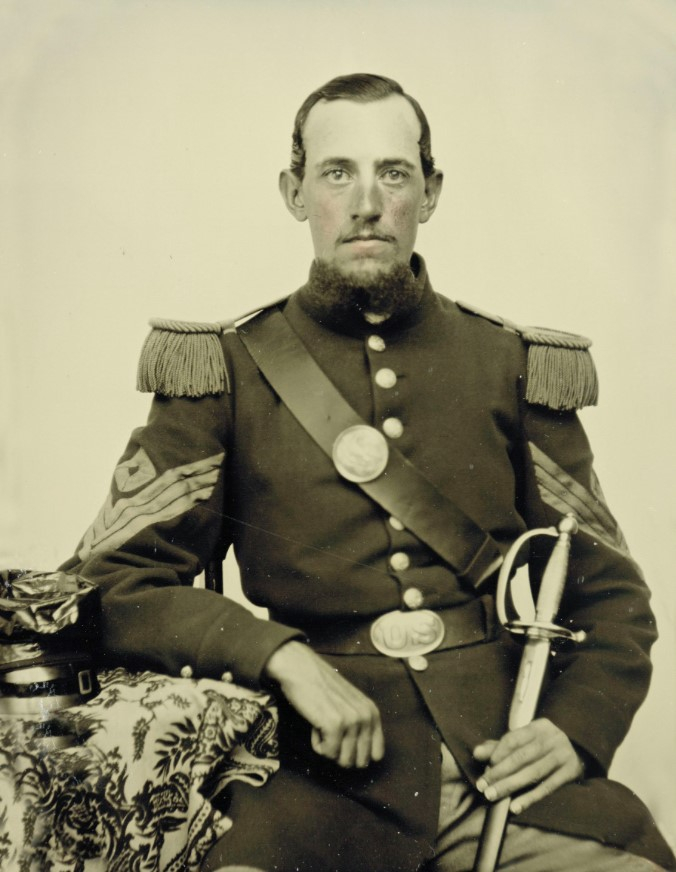
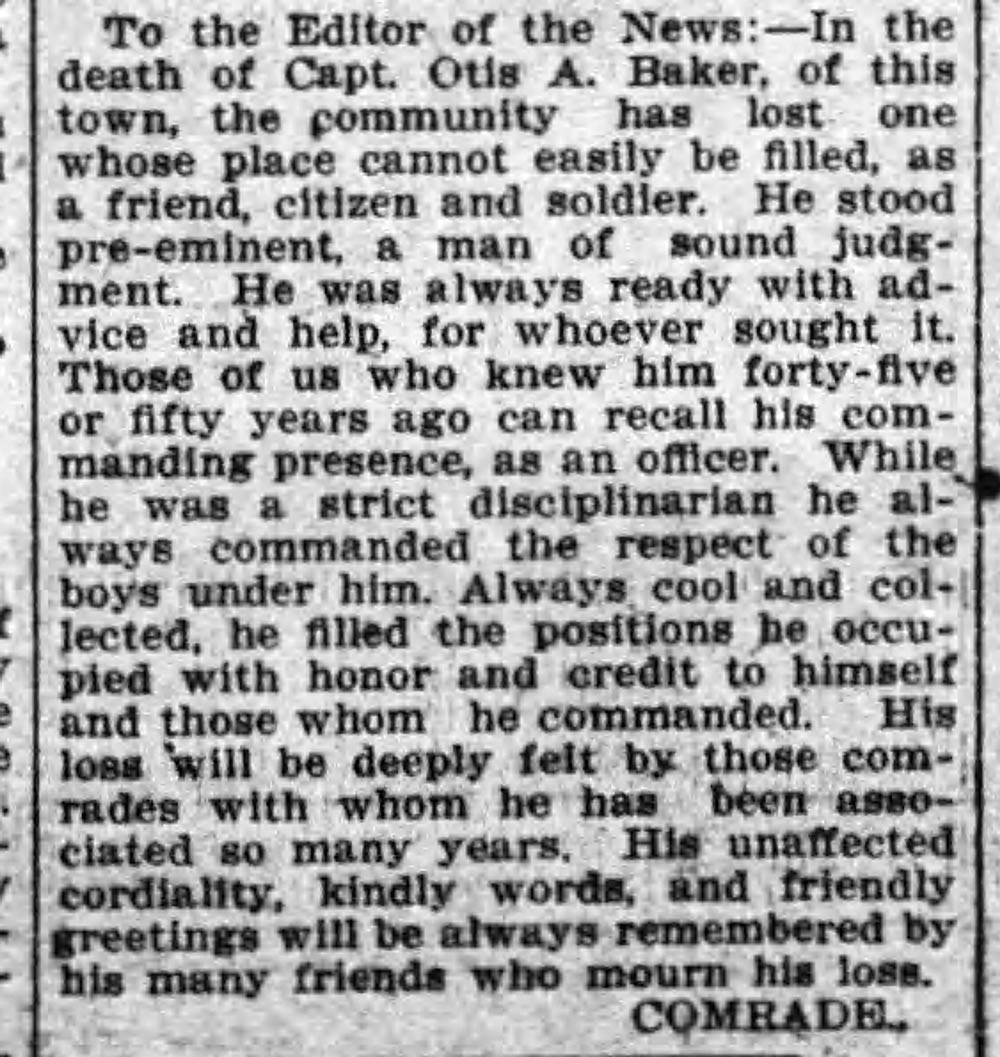
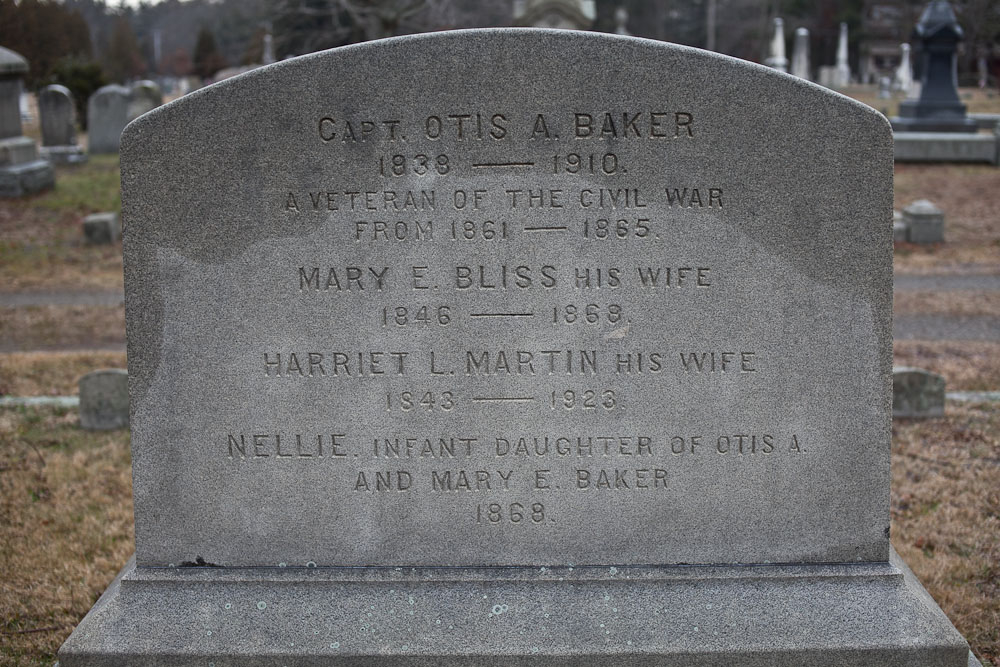
$5,750.00 SOLD
Quantity Available: None
Item Code: 490-5379
This .44 Colt Army, made in 1861, was preserved with its original holster bearing a dead-real family label reading: “Pistol & Holster Carried / by Capt. Otis A. Baker in / the war of the rebellion 18[..]-1865.” Officers of lesser character or stature might have chosen a smaller sidearm, but Baker was recalled by “a comrade” as “a commanding presence, as an officer.” Army records describe him with black hair, hazel eyes, a dark complexion, and standing 6’2” - 6’4” by the recollection of one of his men (perhaps the same comrade,) who pictured him in Fall 1862, with more a year in service under his belt already, as, “twenty-four years old . . . indeed a giant, standing six feet four in his stockings, straight as an arrow, well versed in military tactics; and, although the youngest of the captains in the Third Regiment, his ability as officer was never questioned, nor had the company any reason to regret its choice of him as their captain. Resolute by nature, kind in heart, he was a man who did things; always doing his duty regardless of consequences to himself. He exacted from every man of his company a strict and impartial obedience to himself and to all officers with whom they were to render duty. At the battle of Kinston, N.C. as we were formed into line of battle, expecting momentarily to be ordered to the front to take a more active part. Captain Baker made this little speech, ‘In a few moments we shall be where we shall see more active and more dangerous work, but no matter what we may meet let not a man of you run until I run, but when you see me run then let every man run like the devil.’ Suffice it to say, no man was seen running.”
Born in Rehoboth, MA, in 1838, Otis Allen Baker was a mason and contractor conducting a profitable business in Providence, RI, when the war started and was one of the first to enlist, joining Capt. Dexter’s “National Cadets” on 4/16/61, which was accepted for state service for three months the next day and mustered into US service on 5/2/61 as Company A of Ambrose Burnside’s 1st RI Detached Militia. At First Bull Run the regiment fought on Matthews Hill, losing in the course of the battle 12 killed, 33 wounded, another 18 wounded who were captured, 10 unwounded and captured, and 1 missing. Baker was among the uncaptured wounded, recovered and was mustered out with the regiment on 8/2/61, though according to one source he carried a bullet in his arm for the rest of his life.
A history of Rehoboth said of Baker, “love of country and loyalty to the same were his strong characteristics,” something he demonstrated by reenlisting little more than a month later, mustering into Co A of the 4th Rhode Island as of 9/11/1861, and transferring to Co. D on 10/20/61 serving both as First Sergeant. A photo in the Library of Congress shows him in his dress uniform, wearing 1851 pattern epaulets, a sergeant’s sword on shoulder belt, and a pair of first sergeant chevrons that seem newly added to his frock coat. He served as an NCO for just a little over two months, receiving a commission 11/20/61, and transferring to Co. F as 2nd Lieutenant. The serial number on his Colt dates it 1861 and it becomes an appropriate acquisition at this point, with privates and NCOs discouraged or forbidden from carrying pistols (mainly as dangerous around camp,) but officers purchasing them as sidearms along with a regulation sword.
The 4th Rhode Island saw initial service around Washington, until detached from Howard’s Brigade in December to join Burnside’s expedition against the North Carolina coast. The sailed in January and took part the Battle of Roanoke and fighting at Elizabeth City in February with light casualties, though at Roanoke their flag upon Fort Bartow announcing its capture to the fleet. In March they took significant casualties, 10 killed, 5 mortally wounded, and 20 wounded in the Union victory at the Battle of Newbern, taking part in a bayonet charge and capturing a Confederate battery and flag. And, in March and April the regiment took part in the siege, bombardment and capture of Fort Macon, after which it did duty at Beaufort and Newbern until July, when it returned to Virginia to cooperate with McClellan.
Baker left the regiment shortly after its return to Virginia, resigning as of 8/11/62. He was one of fourteen officers to do so in protest of the Governor’s appointment of a new Colonel from outside the unit, who left, “amid the cheers and good wishes of the regiment.” He was not one to stay out of the fight for long, however, and very soon after agreed to take a commission from the Governor of Massachusetts, in Co. H of the 3rd Massachusetts, an old militia regiment federalizing for a second term of U.S. service, this time for nine months. Baker was told up front that the post of Captain was already filled, but that he might be First Lieutenant: “his answer was that he intended to see the war through and was ready for anything that might offer.” At the formal organization of the company, however, the Captain declined to serve and Baker was elected in his place, officially joining for duty 9/18/62 and mustering in 9/23/62, but with rank from 9/11/62, just one month after leaving the 4th Rhode Island (with one source dating it as early as 9/6/62.)
Service in the 3rd MA took him back to North Carolina. After training for a month the regiment sailed for New Bern on October 22 and went into camp on the Neuse River four days later. It’s initial service was picket, outpost and patrol duty against Confederate forces holding the interior of the state, but in December they joined the Goldsboro Expedition in December- an attempt to interrupt supply lines to Virginia, resulting in battles at Kinston, Whitehall and Goldsboro, during the first of which Bates made the short, matter of fact speech to his men recorded above. The regiment later took part in several smaller expeditions, including the relief of Washington, NC., before mustering out 6/23/63.
Baker’s did his last two tours of duty within the state of Massachusetts as Captain of the 18th Unattached Company of Massachusetts Infantry. This was part of the state’s Independent Division of Militia, tasked with guard and garrison duty along the Massachusetts coast. He mustered in as Captain with the company for 100 days service on 8/5/64 and served with them on Gallop’s Island in Boston Harbor and at Camp Meigs at Readville until mustered out on 11/14/64. In the meantime captains of 100-day companies had been ordered to organize their companies again for one year’s service, mustering out those who chose not re-enlist and recruiting new men to take their places. He accomplished this, with the new 18th Company mustering in 12/6/64 and 12/7/64, and his new commission dated 12/10/64. This company seems to have spent its entire service at Camp Meigs, mustering out on 5/12/65 with the end of the war.
Baker married in 1867, but his wife and baby daughter both died in 1868. He headed west some time thereafter and was working as a mason in Colorado in 1880, but had returned east by 1900. He married again in 1904 and settled in North Swansea, MA. He was active in regimental veteran groups and the G.A.R., three posts of which, including his own, the Bucklin Post of Providence, attended his funeral in 1910.
The pistol rates good-plus for condition, showing field use with shallow pitting and scratches on the barrel, more pitting on the cylinder, but complete and all original, with legible markings. The barrel assembly and cylinder show a mix of dark and steel gray in color, with some thin brown, though the frame is smooth and has some mottled bluish-gray that is the remains of case color. The brass is an untouched, medium color. The barrel address is legible: -ADDRESS COL SAMl COLT NEW-YORK U.S. AMERICA- with COLTS / PATENT on the left frame. Not much of the cylinder scene is visible, but the cylinder stamp “COLTS PATENT” followed by serial number 13307, with the smaller patent date underneath, is fully legible, and the serial number matches on butt, frame, triggerguard, etc. The grips have good color and tight fit. They show scratches and some dings around the base, but also a faint cartouche on the left.
The holster is a typical army issue flap holster, holding the pistol butt-forward on the wearer’s right, and is in good condition. Showing a black finish shifting to brown, with intact belt loop, latch tab, toe plug, etc. The latch tab is secured by a straight line of stitching only, indicating an early to mid-war product. The finish on the body is good, the belt loop shows rubbing from wear against the body, as does that side of the flap, which shows some wear and flaking from flexing on, as does the latch tab.
The pistol is matching serial number 13307, giving it an 1861 date of manufacture, and thus suitable for carriage by Baker early in his service as a commissioned officer. Infantry privates and NCOS were discouraged from carrying anything but their regulation sidearms, with pistols regarded as too dangerous around camp for one reason. Officers might arm themselves with pistols as well as the regulation sword. Most, particularly after substantial campaigning, would choose a lighter weapon that might offer some close-up protection and confer some authority, but little more. Given Baker’s determination to serve, a .44 caliber revolver seems an appropriate choice. The cartouche and issue-style holster indicate he may have acquired it from a federal cavalryman. A miss is as good as a mile with serial numbers, but some pistols close in serial number were in the hands of the 1st New Jersey Cavalry in 1862 when that unit and the 4th Rhode Island were both in Virginia after the latter’s return from North Carolina. However Baker got it, this is an impressive veteran’s pistol and holster, and classic M1860 Army with a low serial number, showing real field use and a wonderful, period, brown ink label. [sr] [ph:m]
~~~~~~~~~~~~~~~~~~~~~~~~~~~~~~~~~~~
THIS ITEM, AS WITH ALL OTHER ITEMS AVAILABLE ON OUR WEB SITE,
MAY BE PURCHASED THROUGH OUR LAYAWAY PROGRAM.
CLICK HERE FOR OUR POLICIES AND TERMS.
THANK YOU!
Inquire About SCARCE IDENTIFIED OFFICER’S M1860 COLT ARMY WITH HOLSTER AND PERIOD TAG; FIVE TERMS OF SERVICE; WIA FIRST BULL RUN; “HIS ONE IDEA OF LIFE SEEMED TO BE TO DO HIS DUTY.”
Most Popular
Historical Firearms Stolen From The National Civil War Museum In Harrisburg, Pa »
Theft From Gravesite Of Gen. John Reynolds »
Selection Of Unframed Prints By Don Troiani »
Fine Condition Brass Infantry Bugle Insignia »
featured item
DECEMBER 1862 LETTER WRITTEN BY COL. JOSHUA LAWRENCE CHAMBERLAIN TO HIS WIFE FANNY
Here we have a letter written by a man who needs no introduction, Joshua Lawrence Chamberlain. This four-page letter is written on standard 8.5 inch by 11 inch unlined paper. In period ink, Chamberlain writes to his wife, Fanny, from the camp of the… (557-250B). Learn More »
site search
Upcoming Events
The shop is currently closed so that we may conduct our annual inventory. We are available by phone… Learn More »


